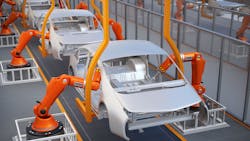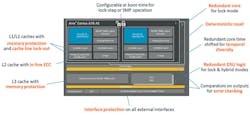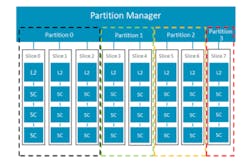Hardening the Automotive Processor Architecture
Arm’s latest automotive processor announcement comes on the heels of the release of the Cortex-R82, a real-time processor platform. This new announcement encompasses the Cortex-A78E, the Mali-G78AE GPU, and the Mail-C71AE image signal processor (ISP). They’re designed for high reliability and safety applications in the automotive space with features like Split/Lock, which was introduced with the Cortex-A76AE. They’re typically combined into a system-on-chip (SoC) that may include other platforms like the Cortex-R82 and Arm’s Ethos neural processing unit (NPU) (Fig. 1).
The centerpiece is the Cortex-A78AE (Fig. 2). The 7-nm incarnation delivers the same performance as the Cortex-A76AE while consuming 60% less power. Of course, it can also run full tilt, delivering 30% more performance.
A cluster typically has four cores, but it’s possible to run a pair in lock-step mode for safety-critical applications with hardware, comparing the results of both cores. The redundant core is time-shifted to provide temporal diversity. The DynamiIQ Shared Unit (DSU) is also redundant. In addition, there’s optional support for CCIX chip-to-chip extensions. The new cores are designed to meet ISO 26262/IEC 61508 and provide ASIL-B and ASIL-D support.
Pointer authentication code (PAC) was introduced in the ARMv8.3 specification. A PAC overview is beyond the scope of this article; however, in general, PAC support simply provides a way to encode and authenticate pointers to prevent improper use of pointers especially when it comes to security considerations. It can address common vulnerabilities such as return-oriented programming. PAC2 is an enhancement that provides a cryptographic check of stack addresses before they’re used. The Cortex-A76AE includes PAC and PAC2 support.
Cortex-A76AE has a new hybrid mode as well. It allows the shared DSU-AE logic to continue operating in lock mode while the CPUs remain independent (Split). This presents two advantages. First, the additional coverage of the DSU-AE counts toward diagnostic coverage in failure modes, effects, and diagnostic analysis (FMEDA). Second, the cores can be individually taken offline. This allows for real-time testing even as the rest of the cluster remains operational. It does limit the system’s performance to the remaining active components, though.
As you might expect, parity plays a role throughout the system, including the AMBA interfaces. This provides end-to-end (E2E) protection of the system.
Safe Automotive Graphics
The Mali-G78AE can support up to 24 shader cores divided into eight slices (Fig. 3). Smaller configurations are available. One feature that stands out is the ability to specify up to four isolation partitions that can be used in conjunction with the processors’ virtual-machine (VM) support.
Partitions enable developers to isolate critical and non-critical applications and displays. A single system can now provide instrument cluster support along with infotainment system support since the two can be separated.
The GPU can also be paired with the Mali-C71AE ISP. It’s a critical component as multiple cameras are now built into most advanced automotive platforms. Designed to support ASIL-B/SIL2 safety standards, it can handle four real-time cameras or 16 buffered cameras. The subsystem has a throughput up to 1.2 Gpixels/s.
Packing advanced car controls that handle infotainment and safety-critical systems into a single SoC is practical with Arm’s combination of IP. How vendors will turn this into reality remains to be seen. But, given the success of earlier platforms like the Cortex-A76AE and its complementary products, it’s not unreasonable to expect some very interesting chips to arrive in the near future.
About the Author
William G. Wong
Senior Content Director - Electronic Design and Microwaves & RF
I am Editor of Electronic Design focusing on embedded, software, and systems. As Senior Content Director, I also manage Microwaves & RF and I work with a great team of editors to provide engineers, programmers, developers and technical managers with interesting and useful articles and videos on a regular basis. Check out our free newsletters to see the latest content.
You can send press releases for new products for possible coverage on the website. I am also interested in receiving contributed articles for publishing on our website. Use our template and send to me along with a signed release form.
Check out my blog, AltEmbedded on Electronic Design, as well as his latest articles on this site that are listed below.
You can visit my social media via these links:
- AltEmbedded on Electronic Design
- Bill Wong on Facebook
- @AltEmbedded on Twitter
- Bill Wong on LinkedIn
I earned a Bachelor of Electrical Engineering at the Georgia Institute of Technology and a Masters in Computer Science from Rutgers University. I still do a bit of programming using everything from C and C++ to Rust and Ada/SPARK. I do a bit of PHP programming for Drupal websites. I have posted a few Drupal modules.
I still get a hand on software and electronic hardware. Some of this can be found on our Kit Close-Up video series. You can also see me on many of our TechXchange Talk videos. I am interested in a range of projects from robotics to artificial intelligence.




